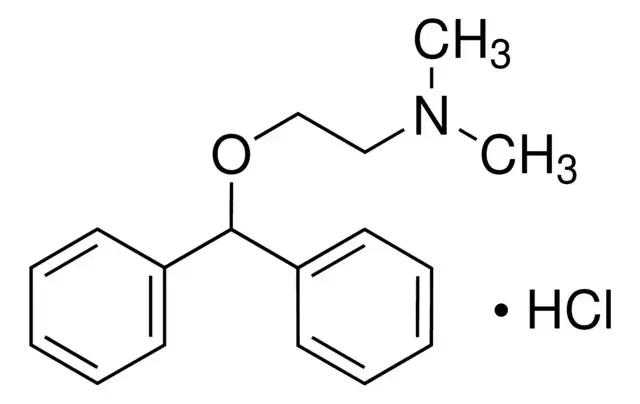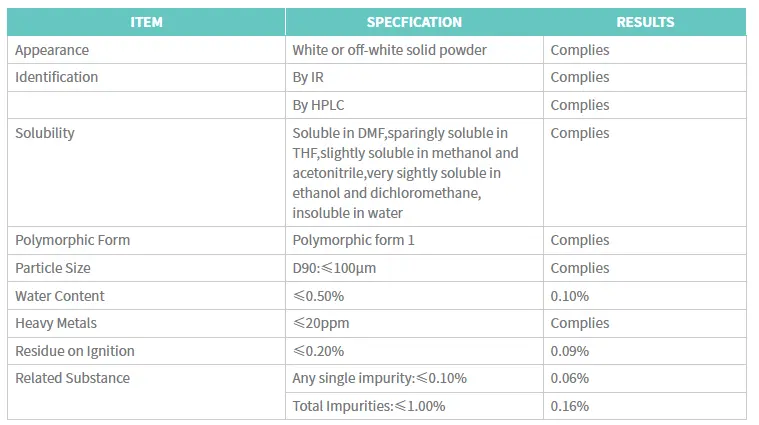Dimenhydrinate powder is a widely used antihistamine medication known for its effectiveness in treating motion sickness and vertigo. This powerful compound works by targeting the body's central nervous system to alleviate symptoms associated with balance disorders and nausea. As a versatile medication available in powder form, dimenhydrinate offers a convenient and fast-acting solution for those experiencing discomfort during travel or battling persistent dizziness.

What are the main uses of Dimenhydrinate powder?
Dimenhydrinate powder is primarily utilized for its potent antiemetic and antivertigo properties. Its versatility makes it a go-to medication for a variety of conditions related to balance and nausea. Here are some of the main applications of dimenhydrinate powder:
- Movement Ailment Avoidance and Treatment: One of the most common employments of dimenhydrinate powder is in the anticipation and treatment of movement affliction. Whether you're setting out on a long car travel, setting cruise on a journey, or taking to the skies, this pharmaceutical can offer assistance reduce the awkward indications related with travel. By focusing on the vestibular framework, which is mindful for our sense of adjust and spatial introduction, dimenhydrinate makes a difference diminish the tactile strife that leads to movement sickness.
- Vertigo Administration: For people enduring from vertigo, a condition characterized by a sensation of turning or discombobulation, dimenhydrinate powder can give much-needed help. It works by stifling the vestibular incitement in the inward ear, which is regularly the root cause of vertigo. This makes it an viable treatment for different shapes of vertigo, counting kind paroxysmal positional vertigo (BPPV) and Meniere's disease.
- Nausea and Heaving Control: Past its applications in movement affliction and vertigo, dimenhydrinate powder is moreover utilized to combat common queasiness and spewing. This makes it important for patients experiencing chemotherapy, recuperating from surgery, or encountering morning affliction amid pregnancy. Its antiemetic properties stem from its capacity to piece histamine receptors in the heaving center of the brain, viably diminishing the encourage to vomit.
- Seasickness Avoidance: For those who cherish the sea but are inclined to nausea, dimenhydrinate powder can be a game-changer. It's especially viable when taken preemptively some time recently setting out on a pontoon trip, making a difference to avoid the onset of queasiness, tipsiness, and spewing that frequently go with ocean travel.
- Vestibular Neuritis Treatment: In cases of vestibular neuritis, an inward ear clutter that can cause serious vertigo, dimenhydrinate powder can be utilized as portion of the treatment regimen. By decreasing the concentrated of vertigo side effects, it permits patients to keep up superior adjust and usefulness whereas their vestibular framework recovers.
- Post-Concussion Disorder Administration: For people encountering discombobulation and adjust issues taking after a concussion, dimenhydrinate powder may be endorsed to offer assistance oversee these indications. Whereas it's not a remedy for post-concussion disorder, it can give alleviation and progress quality of life amid the recuperation handle.
How quickly does Dimenhydrinate powder take effect?
The onset of action for dimenhydrinate powder is a crucial factor for users seeking rapid relief from motion sickness, vertigo, or nausea. Understanding the timeline of its effectiveness can help individuals plan their medication intake for optimal results. Let's explore how quickly dimenhydrinate powder typically takes effect and the factors that can influence its absorption and efficacy.
Rapid Absorption: One of the advantages of dimenhydrinate in powder form is its quick absorption into the bloodstream. When taken orally, the powder dissolves rapidly in the stomach, allowing for faster uptake compared to tablet or capsule forms. On average, users can expect to feel the initial effects of dimenhydrinate powder within 15 to 30 minutes after ingestion.
Peak Plasma Concentration: While the initial effects may be noticeable within the first half-hour, dimenhydrinate powder typically reaches its peak plasma concentration within 2 to 3 hours after administration. This is when the medication is at its most potent, providing maximum relief from symptoms. The duration of this peak effect can last for several hours, making it an effective option for extended periods of travel or prolonged bouts of vertigo.
Factors Affecting Absorption Rate:
Several factors can influence how quickly dimenhydrinate powder takes effect:
- Individual Metabolism: Each person's body processes medications differently. Those with faster metabolisms may experience quicker onset of action, while those with slower metabolisms might take longer to feel the full effects.
- Food Intake: Taking dimenhydrinate powder on an empty stomach generally results in faster absorption. However, if nausea is a concern, it may be advisable to take it with a light snack to prevent stomach upset.
- Dosage: The amount of dimenhydrinate powder taken can affect how quickly it works. Higher doses may lead to more rapid onset of action, but it's crucial to adhere to recommended dosages to avoid potential side effects.
- Hydration Level: Proper hydration can aid in the absorption and distribution of the medication throughout the body. Drinking water when taking dimenhydrinate powder can help ensure optimal effectiveness.
- Age and Overall Health: Older adults or those with certain health conditions may experience a slower onset of action due to changes in metabolism and body composition.
- Preventive vs. Reactive Use: The timing of dimenhydrinate powder intake can significantly impact its effectiveness, especially for motion sickness prevention. For optimal results in preventing motion sickness, it's recommended to take the medication about 30 minutes to an hour before travel or exposure to motion. This allows the drug to reach effective levels in the bloodstream before symptoms can set in. When used reactively to treat existing symptoms of motion sickness or vertigo, the relief may not be as immediate. In these cases, it may take up to an hour for noticeable improvement, with full effects manifesting over the course of a few hours.
- Sustained Action: One of the benefits of dimenhydrinate powder is its relatively long duration of action. Once it takes effect, the relief can last for 4 to 6 hours on average. This extended period of efficacy makes it suitable for long journeys or for managing persistent vertigo symptoms throughout the day.
- Combining with Other Interventions: While waiting for dimenhydrinate powder to take effect, users can employ other strategies to manage their symptoms. These may include focusing on a stable horizon, getting fresh air, or using acupressure bands. These complementary approaches can provide some immediate relief while the medication begins to work.
Can Dimenhydrinate powder be used for children?
The use of dimenhydrinate powder in pediatric populations is a topic of significant interest for parents and healthcare providers alike. While dimenhydrinate is generally considered safe and effective for adults, its use in children requires careful consideration and often specific guidelines. Let's delve into the nuances of using dimenhydrinate powder for children, including its safety profile, dosing recommendations, and best practices for administration.
Safety Profile for Children:
Dimenhydrinate has been used for decades to treat motion sickness and other related conditions in children. Its long-standing presence in pediatric medicine has provided a wealth of data on its safety and efficacy. Generally, when used as directed, dimenhydrinate powder is considered safe for children. However, as with any medication, there are important factors to consider:
- Age Restrictions: Most manufacturers and healthcare providers recommend dimenhydrinate for children aged 2 years and older. The use of this medication in infants and very young children should only be under the direct supervision of a pediatrician.
- Dosage Sensitivity: Children are more sensitive to medications, including dimenhydrinate. It's crucial to adhere strictly to age-appropriate dosing guidelines to prevent overdose or adverse effects.
- Potential Side Effects: While generally well-tolerated, some children may experience side effects such as drowsiness, dry mouth, or mild dizziness. These effects are typically mild and transient but should be monitored.
Dosing Recommendations:
The correct dosage of dimenhydrinate powder for children is based on their age and weight. It's essential to follow the guidance provided by healthcare professionals or the product packaging. Here's a general guideline, but always consult with a pediatrician for personalized advice:
- Children 2-5 years: 12.5-25 mg every 6-8 hours, not to exceed 75 mg in 24 hours
- Children 6-12 years: 25-50 mg every 6-8 hours, not to exceed 150 mg in 24 hours
- Children over 12 years: Adult dosage (50-100 mg every 4-6 hours, not to exceed 400 mg in 24 hours)
It's important to note that these are general guidelines and may vary depending on the specific formulation of dimenhydrinate powder and the child's individual needs.
Best Practices for Administration:
When using dimenhydrinate powder for children, consider the following best practices:
- Precise Measurement: Use the measuring device provided with the medication or a pharmacy-grade measuring spoon to ensure accurate dosing.
- Mixing with Liquids: Dimenhydrinate powder can be mixed with a small amount of water, juice, or soft food to make it more palatable for children. Ensure the child consumes the entire mixture to receive the full dose.
- Timing of Administration: For motion sickness prevention, administer the dose about 30 minutes before travel. For ongoing conditions like vertigo, follow the prescribed schedule consistently.
- Avoid Overdosing: Keep track of doses given and adhere strictly to the recommended frequency. Never exceed the maximum daily dose.
- Monitor for Effects: Observe your child after administering dimenhydrinate powder, noting both its effectiveness in treating symptoms and any potential side effects.
- Alternative Formulations: While powder form offers flexibility in dosing and ease of administration, dimenhydrinate is also available in other child-friendly formulations such as chewable tablets or liquid suspensions. These alternatives may be preferable for some children, especially those who have difficulty with powders.
Conclusion
In conclusion, dimenhydrinate powder can be a valuable tool in managing motion sickness, vertigo, and related conditions in both adults and children. Its rapid onset of action, versatility in application, and generally favorable safety profile make it a popular choice among healthcare providers and patients alike. However, as with any medication, it's crucial to use dimenhydrinate powder responsibly, adhering to recommended dosages and guidelines. For children, in particular, careful consideration of age-appropriate dosing and administration is essential. By understanding how dimenhydrinate powder works, its onset of action, and its proper use in pediatric populations, individuals can make informed decisions about its use in managing balance-related discomforts. Always consult with a healthcare professional for personalized advice, especially when considering long-term use or use in young children. If you are also interested in this product and want to know more product details, or want to know about other related products, please feel free to contact lea_slsbio@163.com,WhatsApp+86 13193326505.

References
1. Schmäl, F. (2013). Neuronal mechanisms and the treatment of motion sickness. Pharmacology, 91(3-4), 229-241.
2. Takeda, N., Morita, M., Horii, A., Nishiike, S., Kitahara, T., & Uno, A. (2001). Neural mechanisms of motion sickness. Journal of Medical Investigation, 48(1-2), 44-59.
3. Golding, J. F., & Gresty, M. A. (2015). Motion sickness. Current Opinion in Neurology, 28(1), 83-88.
4. Brainard, A., & Gresham, C. (2014). Prevention and treatment of motion sickness. American Family Physician, 90(1), 41-46.
5. Spinks, A., & Wasiak, J. (2011). Scopolamine (hyoscine) for preventing and treating motion sickness. Cochrane Database of Systematic Reviews, (6).
6. Murdin, L., Hussain, K., & Schilder, A. G. (2016). Betahistine for symptoms of vertigo. Cochrane Database of Systematic Reviews, (6).

